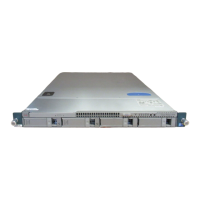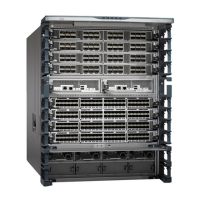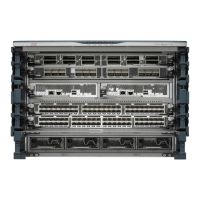© 2013 Cisco and/or its affiliates. All rights reserved. This document is Cisco Public Information. Page 30 of 48
Figure 24 shows a vEth port profile; in this example, an IP access list is applied to a port profile.
Figure 24. vEth Port Profile Example
Ethernet Port Profiles
Port profiles are not used only to manage vEth configuration; they are also used to manage the pNICs in a
Microsoft Hyper-V host. When a port profile is defined, the VSM administrator determines whether the profile will
be used to manage vEth interfaces or pNICs. By default, the port profile is assumed to be used for vEth
management.
To define a port profile for use on pNICs, the network administrator applies the ethernet keyword to the profile.
When this option is used, the port profile is available only to the server administrator to apply to pNICs in a
Microsoft Hyper-V server.
Figure 25 shows an Eth port profile using virtual PortChannel (vPC) host mode. For more information about
configuring port profiles, please refer to the Cisco Nexus 1000V configuration guide.
Figure 25. Eth Port Profile Example
Uplink port profiles are applied to a pNIC when a Microsoft Hyper-V host is first added to the Cisco Nexus 1000V
Switch. The Microsoft SCVMM administrator is presented with a dialog box in which the administrator selects the
pNICs to be associated with the VEM and the specific uplink port profiles to be associated with the pNICs. In
addition, the Microsoft SCVMM administrator can apply uplink port profiles to interfaces that are added to the VEM
after the host has been added to the switch (Figure 26).

